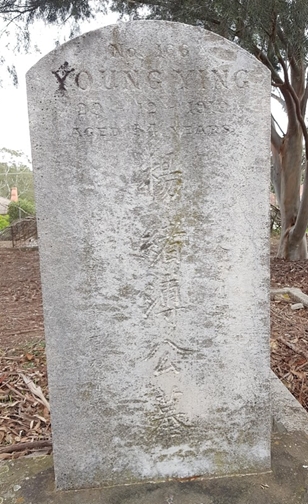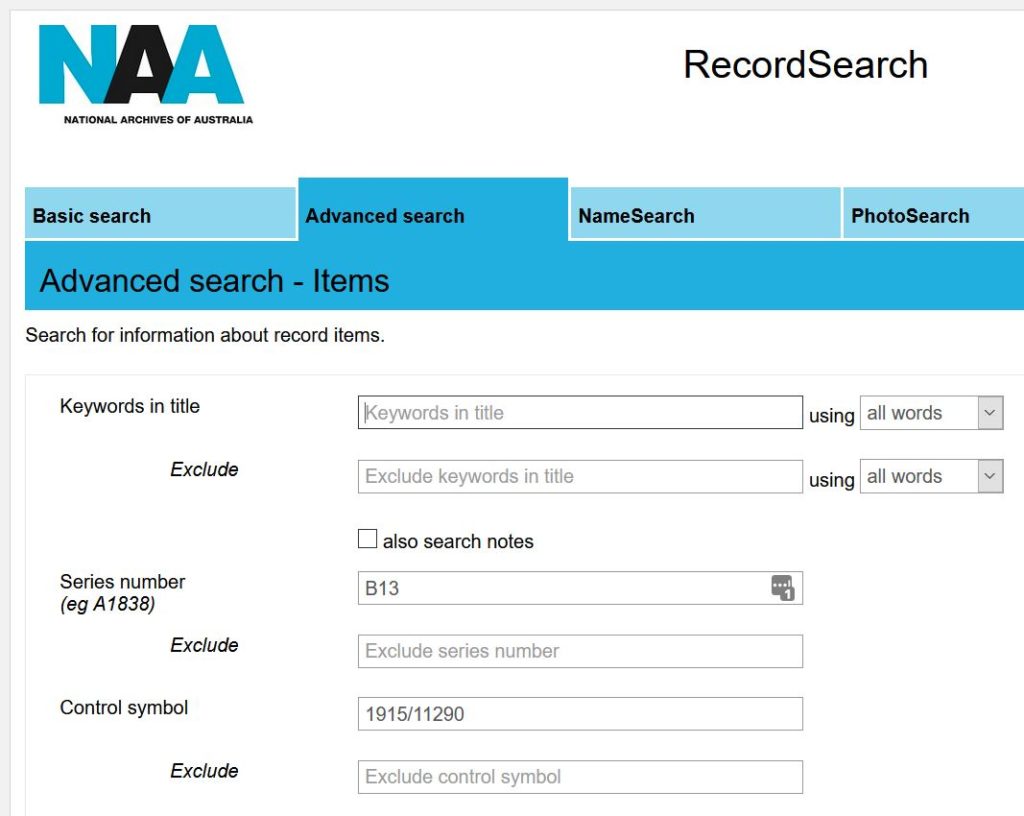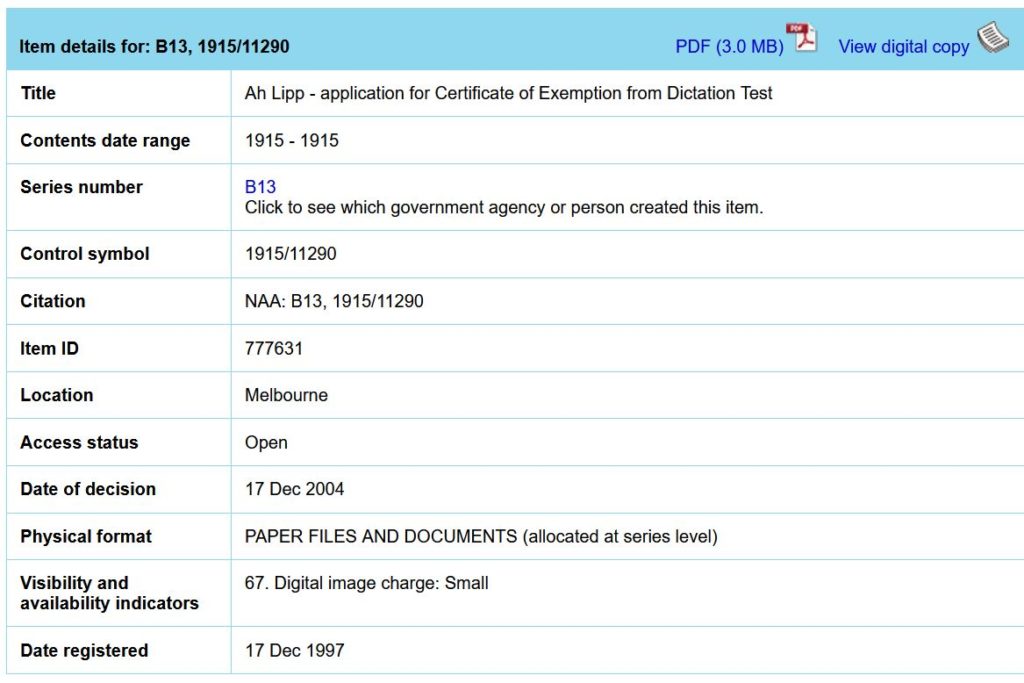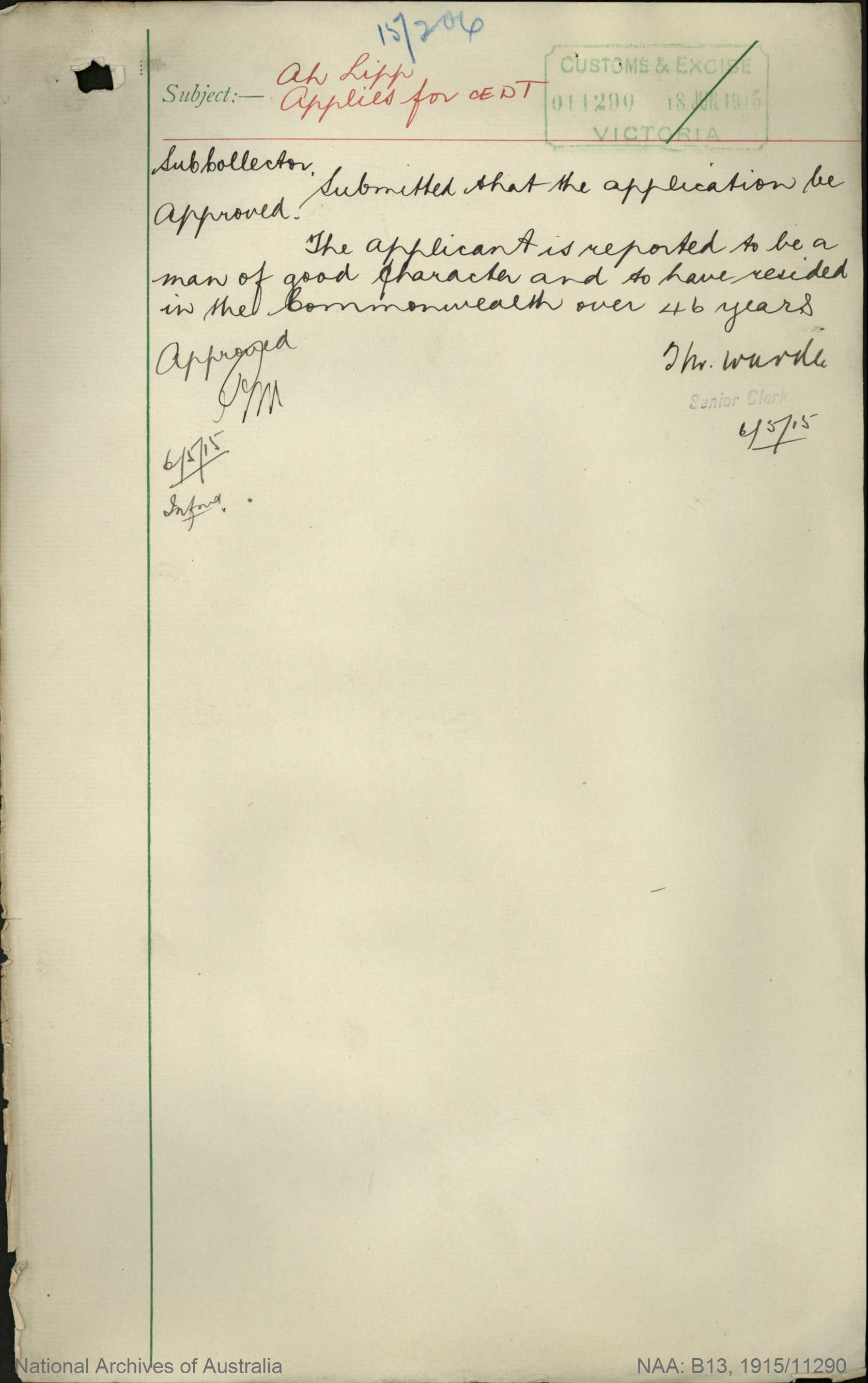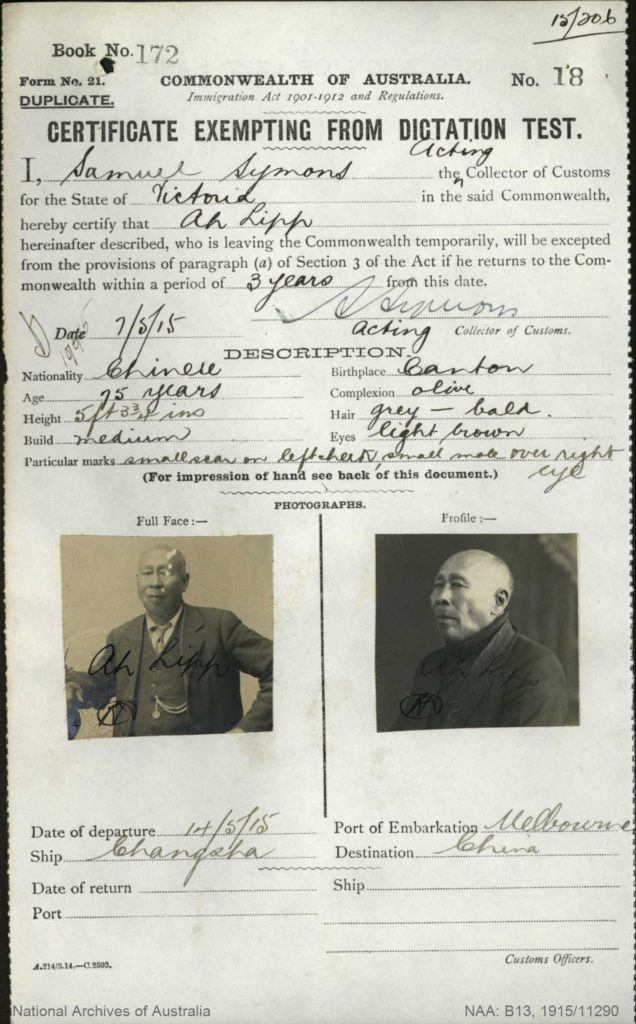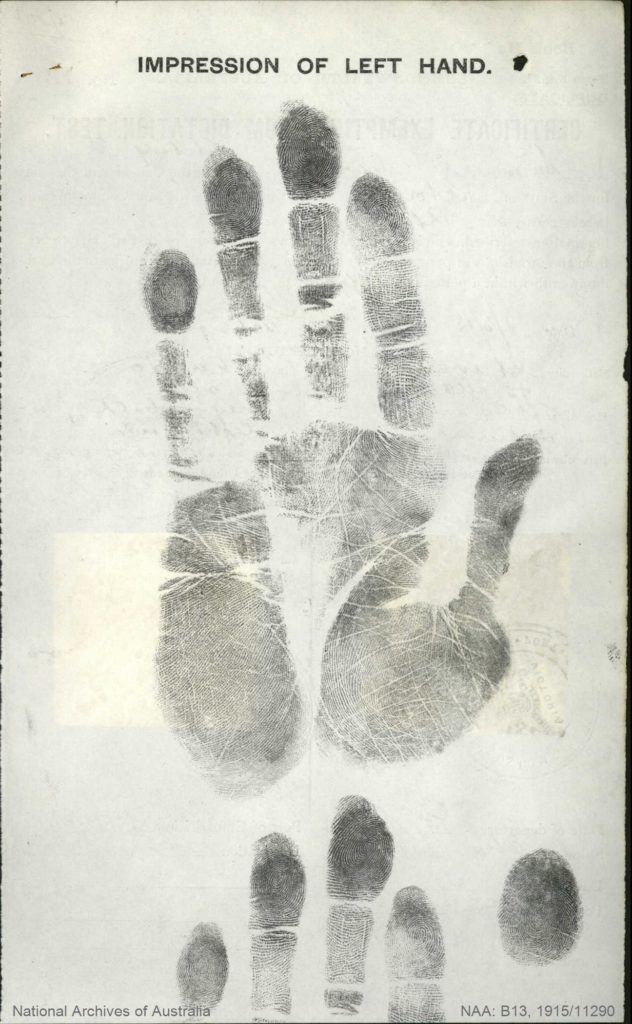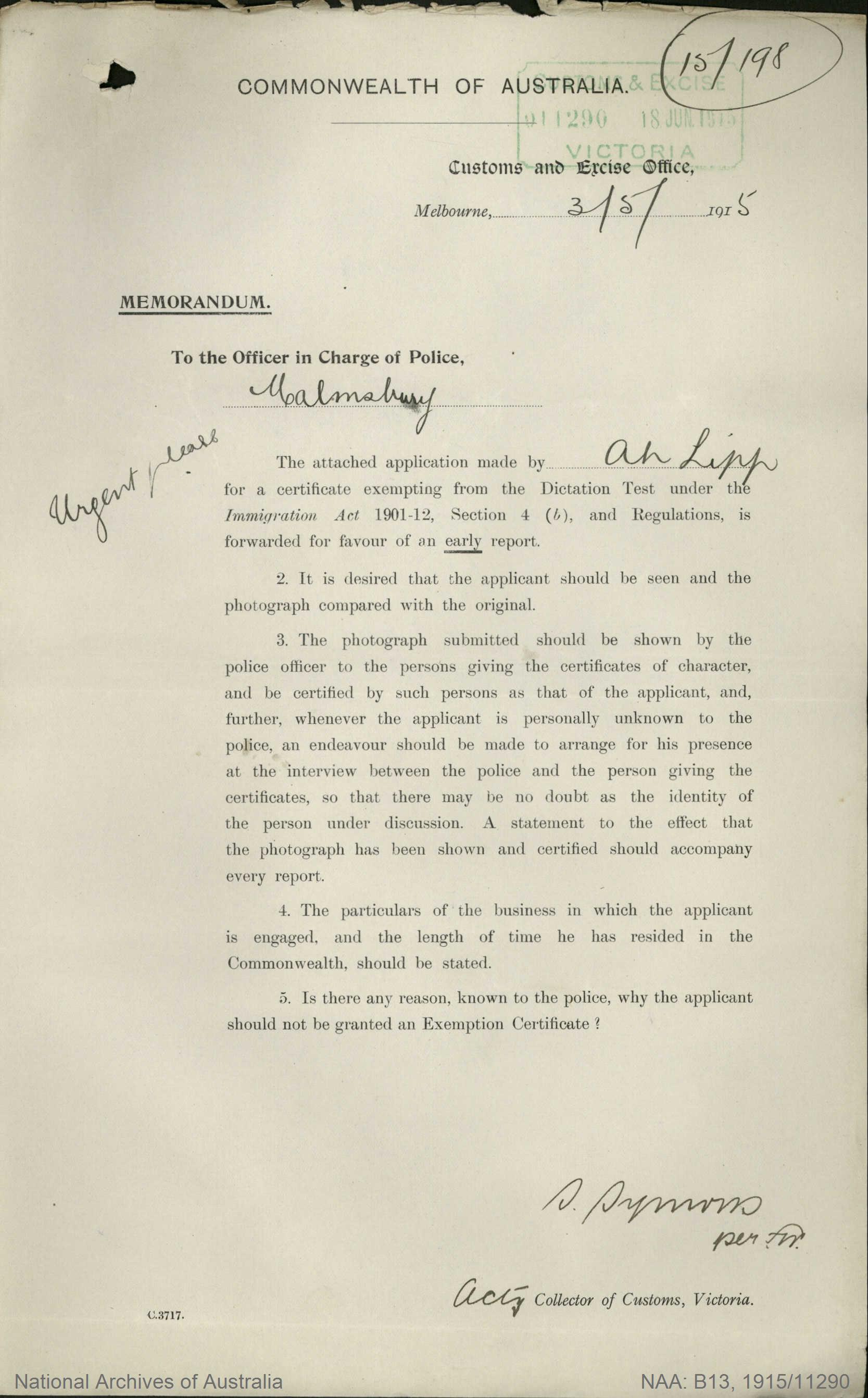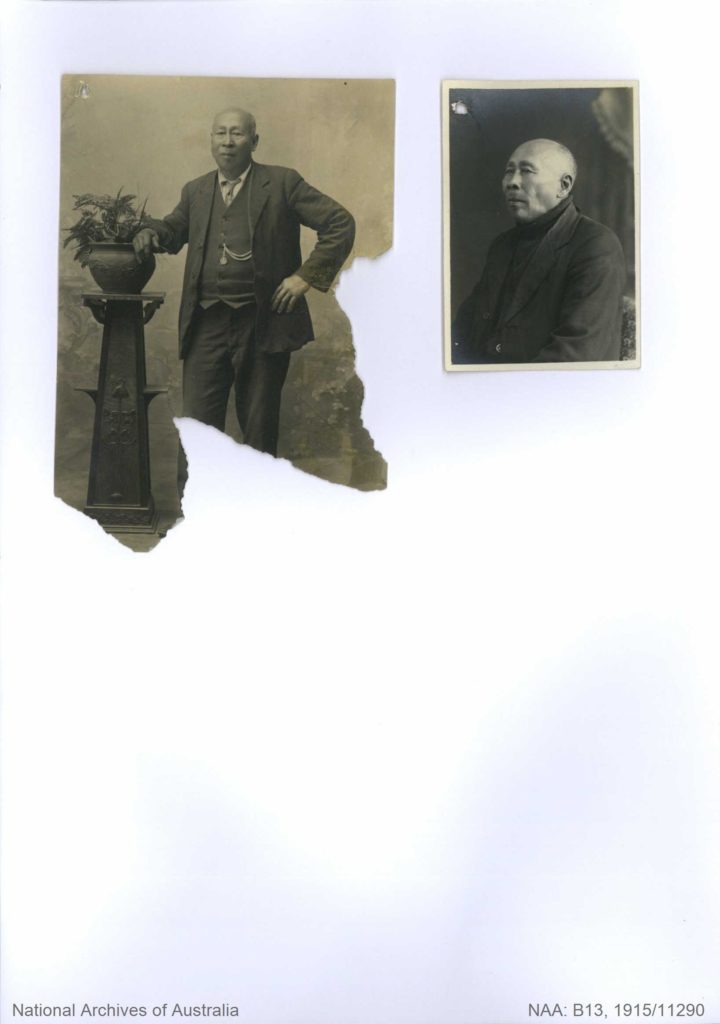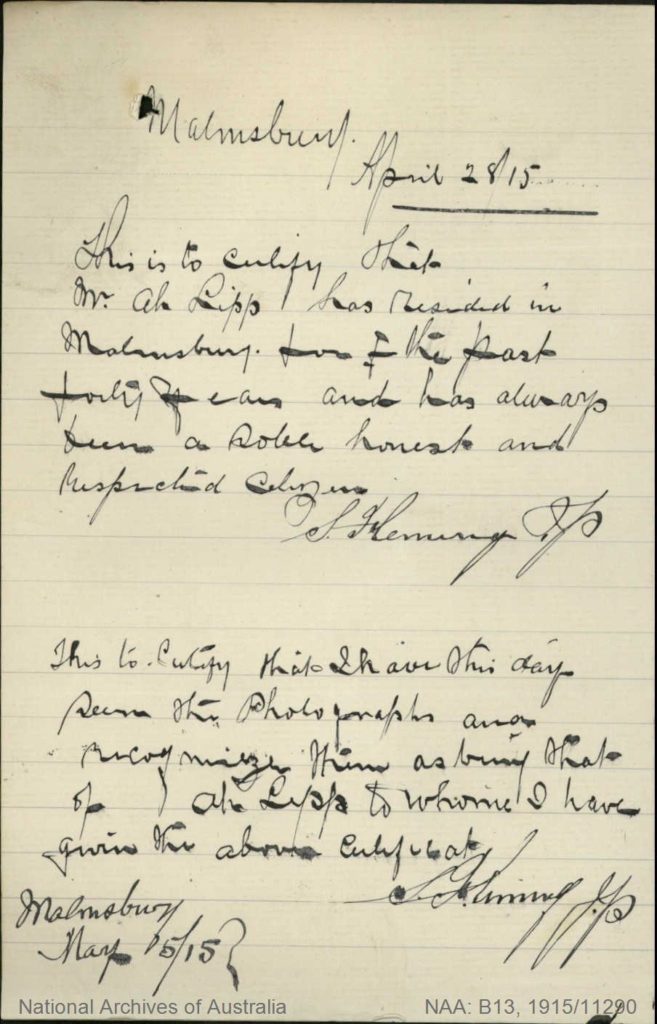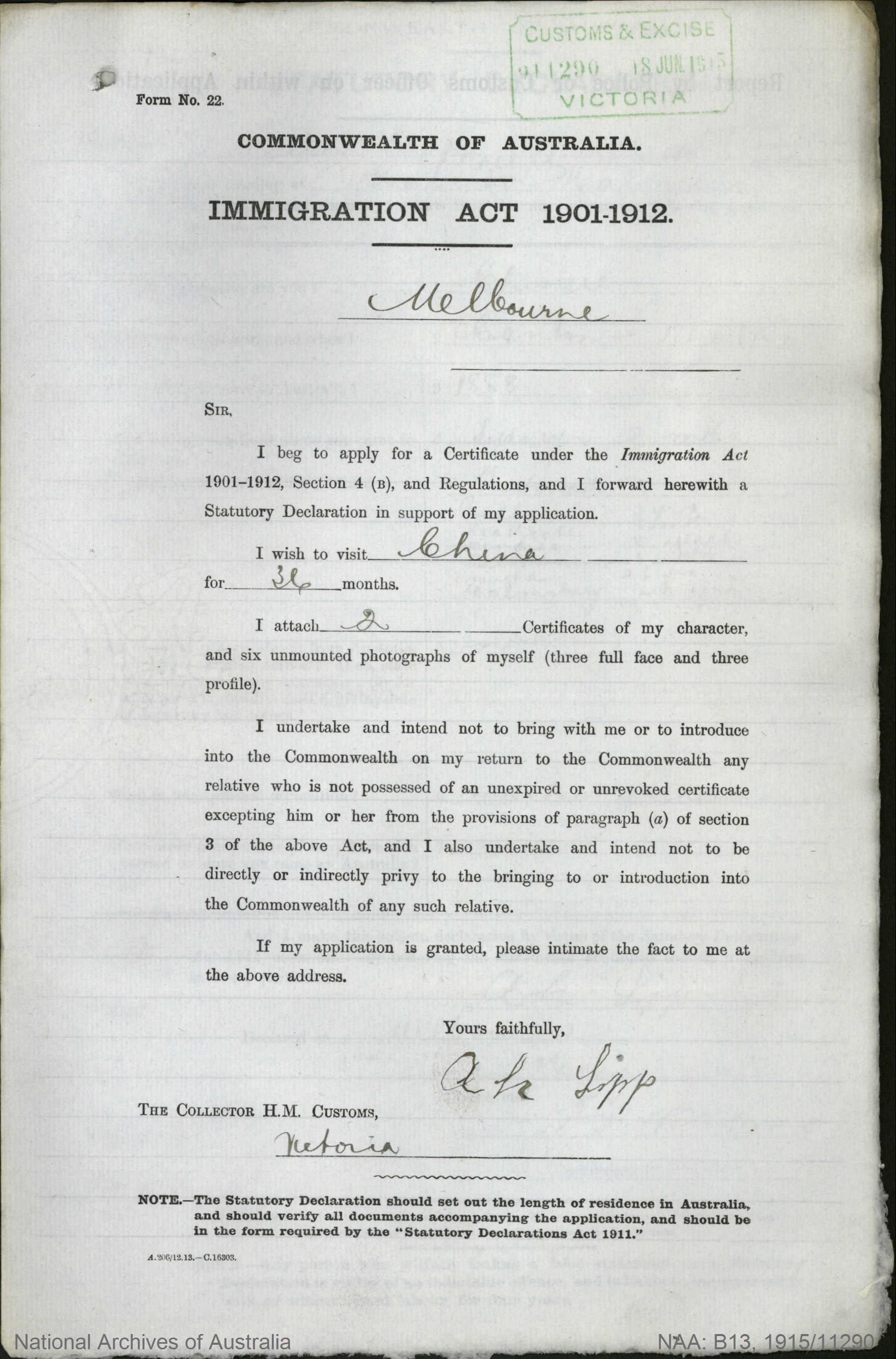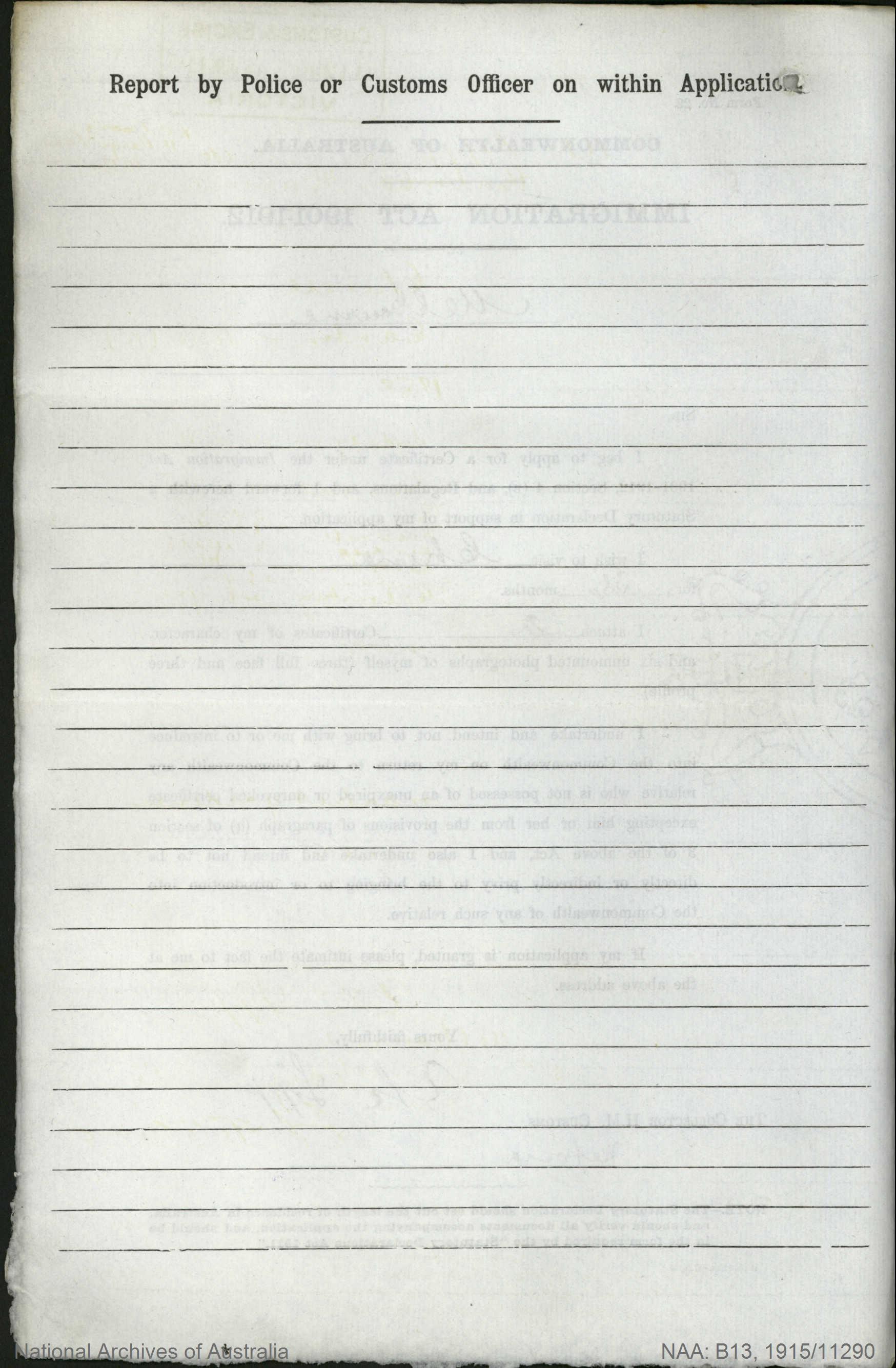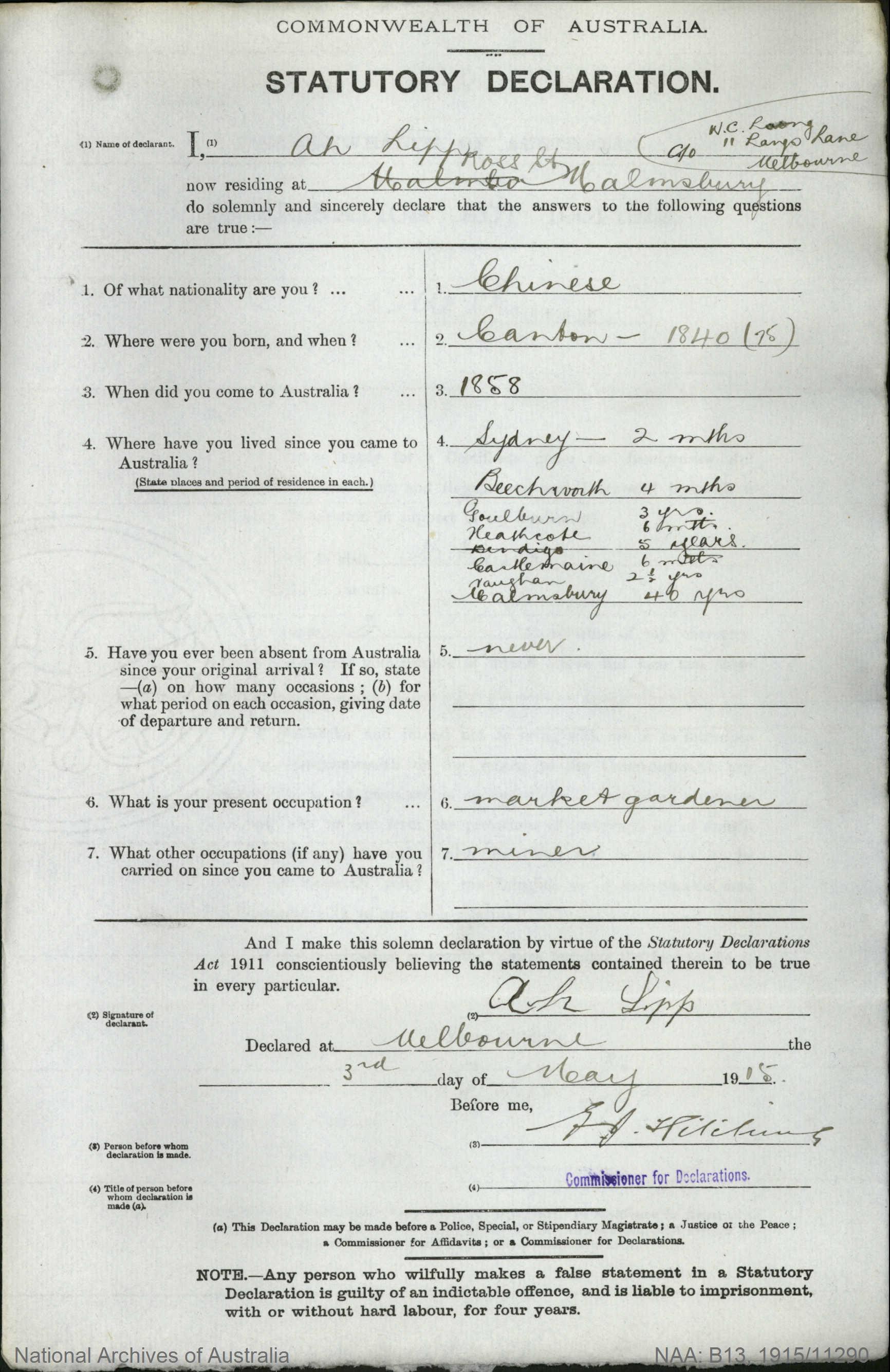By Terry Young (Chinese Australian Family Historians of Victoria)
I grew up in Coburg and during those 20 years I never visited the local cemetery. The Coburg Pine Ridge Cemetery in Bell Street, Preston is one of the oldest in Melbourne dating back to 1856.
Recently I made a decision to visit the cemetery to investigate the Chinese who were buried there. My research tells me that there are about 130 Chinese buried in the Other Denominations section dating from 1907 to 1937. Many of these graves are unmarked.
On this visit I came across the headstone of Young Ying who died 29/12/1919, aged 54.
Using the Victorian CEDT Index, I searched for Young Ying and found the following information.
| 3090 | Young Ying | Chinese | 44 | Market gardener | North Carlton | 1910 | ||
| 5492 | Young Ying | Chinese | 49 | Gardener | Brunswick | 1915 | ||
| 7153 | Young Ying | Chinese | 52 | Gardener | East Brunswick | 1919 |
At first I thought this was not the same person as he returned to China in 1919 (see above)
A closer look at the actual register page image tells me that the CEDT was cancelled as it was not used within three years of issue.

[Index entry for Young Ying, 1919, Register 2, p. 43, Victorian CEDT Index, https://www.cafhov.com/vic-cedt-index/?type=id&search=7153 (original data taken from ‘Register of Certificates Exempting from the Dictation Test, 1915-1933’, National Archives of Australia: B6003, 2)]
It was not used as he had died in December 1919 as identified on the headstone.
If I had not looked at the register page I would have assumed this was not the same person. This is an example of how the Victorian CEDT Index can help provide more information and support family history research.
The index is able to provide information about 262 Chinese who resided in Coburg from 1904 to 1955 or you can browse through those from other suburbs here – http://www.cafhov.com/vic-cedt-index/browse.
Terry Young
Terry is a first generation Chinese Australian. As an adult he developed a curiosity about the unspoken lives of his Cantonese speaking parents. Both migrated to Australia during difficult times, personally and historically. Terry’s family research has helped shape his persona and identity. He continues to research and discover details about his ancestors and his extended family, not only for his personal satisfaction but also for future family generations.

